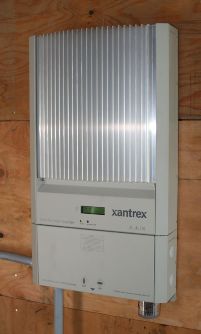Building Management
 Building Management Systems (BMS) increase the energy efficiency of building systems through the use of automatic controls. Through computers, monitors and sensors, BMS can significantly enhance the operating performance of a building by providing effective zone control, matching supply with demand, and optimizing equipment efficiencies. BMS also allow for more accurate monitoring of energy use in the building. These systems can be designed to integrate any of the following energy saving functions:
Building Management Systems (BMS) increase the energy efficiency of building systems through the use of automatic controls. Through computers, monitors and sensors, BMS can significantly enhance the operating performance of a building by providing effective zone control, matching supply with demand, and optimizing equipment efficiencies. BMS also allow for more accurate monitoring of energy use in the building. These systems can be designed to integrate any of the following energy saving functions:
- Time of day energy use – controlling lights, corridor ventilation fans, central exhaust fans and block heaters according to optimized time schedules
- Temperature setback and zone controls – turning down heating or cooling at night, shutting off zones when not in use
- Temperature/time optimization – monitoring exterior/interior temperatures to meet building needs
- Supply temperature reset – adjusting supply air or water temperature to meet building needs
- Economizer cycles – using outside air for free cooling
- Demand limit – shedding large loads at peak electric consumption times to control monthly peak electrical demands
- Duty cycling – controlling equipment on/off
- Humidity control
- Air quality control, e.g. carbon dioxide monitoring
The effectiveness of a BMS depends largely on the actions of building operators; they must be properly trained to use the system to optimize the performance of the building, as intended in the design.
Residential energy management and monitoring systems are considerably more simple. These can be operated and programmed by the homeowner in much the same way you would program a cell phone, with similar or even more compelling user feedback screens. For more information about these systems, and the benefits they provide, click here.
